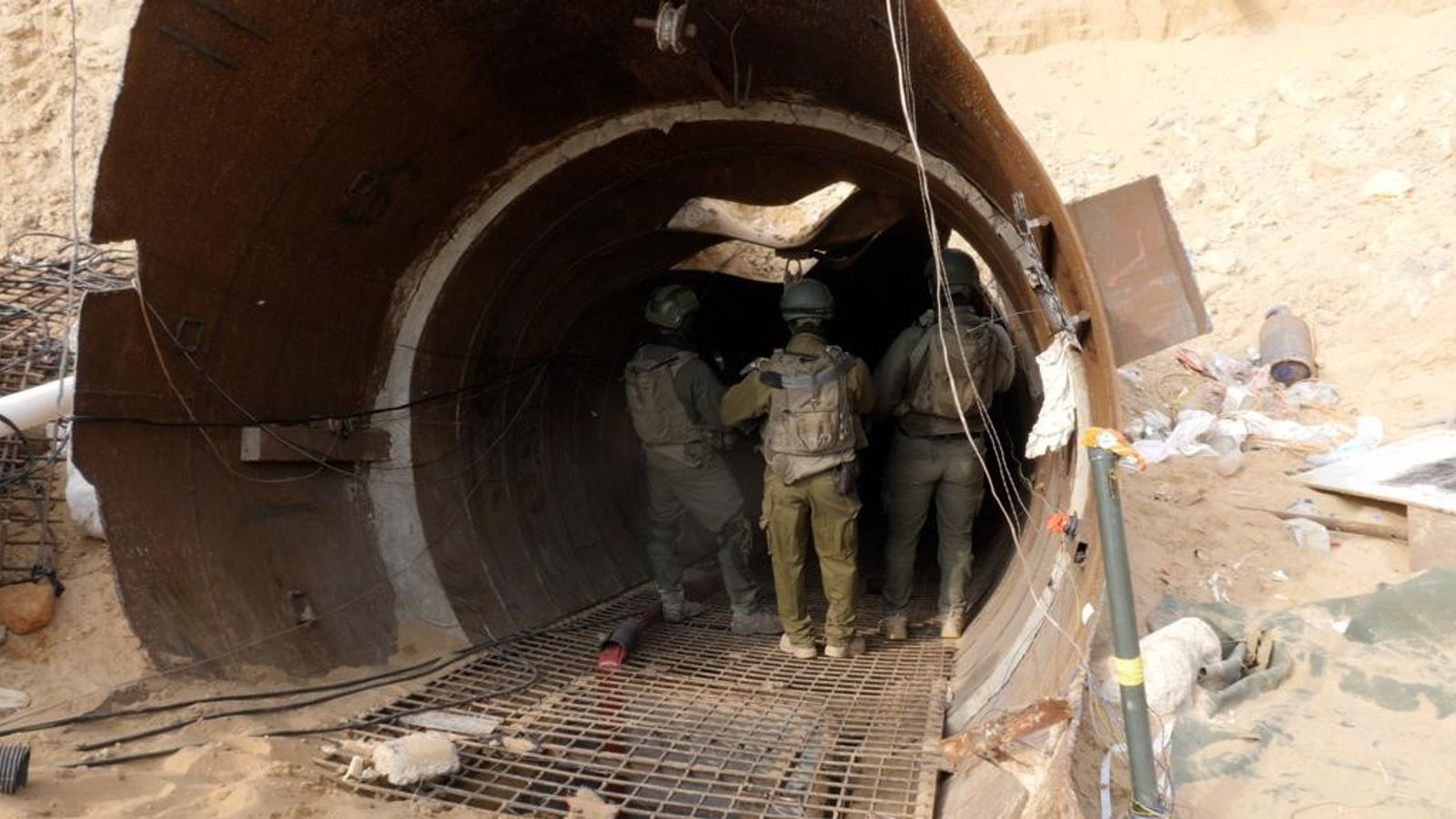Hamas has always had a reputation for having some of the best underground tunnels of any militia.
In a media tour arranged by the Israel Defence Forces (IDF) into Gaza, one of the most impressive tunnels the Israeli military has discovered was on full display.
The entrance was just inside Gaza, only a few hundred metres from the Erez border crossing with Israel, where there was a gaping hole in the sand.
Inside was a heavily fortified tunnel, and without doubt the largest tunnel I have ever seen in Gaza.
There was plenty of room inside the reinforced concrete tunnel. A steel pipe ran along the top of it, and electricity cables dangled inside.
The IDF said the tunnel ran for more than two miles into central Gaza City.
It’s no secret Hamas has been building its tunnel infrastructure for years. It uses them to transport fighters, not only belonging to Hamas but also other militant groups like Islamic Jihad, from one end of the strip to the other.
Israel-Hamas war: Video appears to show IDF soldiers rounding up half-naked men in Gaza stadium
Egyptian plan for Israel-Gaza war ceasefire emerges – as Netanyahu aide says Hamas ‘must be destroyed’
Israel-Hamas war: At least 68 Palestinians, including women and children, ‘killed by Israeli airstrike on refugee camp’
Tunnels are also used to move and store weapons, launch attacks against Israel and, in this war, to hold hostages.
With every war with Israel, tunnels are destroyed and rebuilt again. But the extent of the labyrinth beneath Gaza is difficult to fathom, it’s believed it may stretch 150-200 miles.
There were no lights inside. The IDF had placed a metal grid on the floor to cover holes in the ground that dropped by up to 15 metres, down to other parts of the subterranean complex.
One IDF spokesman told me the degree of sophistication and engineering used to build and maintain these tunnels was “impressive”.
In the distance you could hear small arms fire and occasional explosions. Smoke hung over the northeastern tip of Gaza, and you could see large blocks of apartments, reduced to rubble.
The land inside Gaza next to the Israel border, which is known as the buffer zone, was churned up by Israeli tanks and bulldozers.
The IDF’s automatic machine gun towers – which surround the Gaza strip and are positioned along the wall – were clearly heavily damaged in the 7 October attack by Hamas.
The covered walkway from the Erez crossing into Gaza was destroyed, along with Israeli border offices adjacent to the crossing.
Hamas has long promoted its network of tunnels on its official television news station, but I can’t recall them ever allowing journalists to visit those it built for fighting.
Israel insists its war must continue until the tunnels are destroyed and Hamas is defeated. Its media tour was aimed at showing journalists what they were dealing with beneath Gaza.
The problem is the tunnels are embedded into the Gaza strip. This tiny strip of land is among the most densely populated places on earth, so of course the tunnels run deep below homes, schools and neighbourhoods.
Hamas has been perfecting its tunnel-building over the last 20 years. Members of the group and smuggling barons constructed them under the southern Egyptian border after Israel imposed its siege on Gaza in 2006.
I have visited the underground networks at the bottom of Gaza over the years, and they were crude in comparison to the one we were shown in the north.
In the south, the tunnels were carved out of sand, often only high enough to crawl through, and the men who dug them were often killed when ceilings collapsed.
While this war continues, Hamas’s fighters are still holed up inside these subterranean passages, as are Israeli hostages.
It’s left the IDF with a dilemma: how to destroy the network without killing hostages in the process.
As for Gaza’s civilian infrastructure above ground, the United Nations says 45% of the territory’s housing stock has been destroyed.
Israel says it wants to protect civilians during this war, but Gaza’s Health officials say that more than 21,000 Palestinians have been killed so far.
The tunnels have given Hamas a tremendous military strategic advantage in this war – Israel wants them destroyed once and for all.








